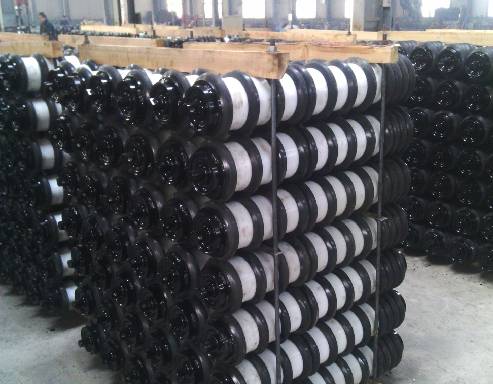 Afrikaans
Afrikaans  Albanian
Albanian  Amharic
Amharic  Arabic
Arabic  Armenian
Armenian  Azerbaijani
Azerbaijani  Basque
Basque  Belarusian
Belarusian  Bengali
Bengali  Bosnian
Bosnian  Bulgarian
Bulgarian  Catalan
Catalan  Cebuano
Cebuano  Corsican
Corsican  Croatian
Croatian  Czech
Czech  Danish
Danish  Dutch
Dutch  English
English  Esperanto
Esperanto  Estonian
Estonian  Finnish
Finnish  French
French  Frisian
Frisian  Galician
Galician  Georgian
Georgian  German
German  Greek
Greek  Gujarati
Gujarati  Haitian Creole
Haitian Creole  hausa
hausa  hawaiian
hawaiian  Hebrew
Hebrew  Hindi
Hindi  Miao
Miao  Hungarian
Hungarian  Icelandic
Icelandic  igbo
igbo  Indonesian
Indonesian  irish
irish  Italian
Italian  Japanese
Japanese  Javanese
Javanese  Kannada
Kannada  kazakh
kazakh  Khmer
Khmer  Rwandese
Rwandese  Korean
Korean  Kurdish
Kurdish  Kyrgyz
Kyrgyz  Lao
Lao  Latin
Latin  Latvian
Latvian  Lithuanian
Lithuanian  Luxembourgish
Luxembourgish  Macedonian
Macedonian  Malgashi
Malgashi  Malay
Malay  Malayalam
Malayalam  Maltese
Maltese  Maori
Maori  Marathi
Marathi  Mongolian
Mongolian  Myanmar
Myanmar  Nepali
Nepali  Norwegian
Norwegian  Norwegian
Norwegian  Occitan
Occitan  Pashto
Pashto  Persian
Persian  Polish
Polish  Portuguese
Portuguese  Punjabi
Punjabi  Romanian
Romanian  Russian
Russian  Samoan
Samoan  Scottish Gaelic
Scottish Gaelic  Serbian
Serbian  Sesotho
Sesotho  Shona
Shona  Sindhi
Sindhi  Sinhala
Sinhala  Slovak
Slovak  Slovenian
Slovenian  Somali
Somali  Spanish
Spanish  Sundanese
Sundanese  Swahili
Swahili  Swedish
Swedish  Tagalog
Tagalog  Tajik
Tajik  Tamil
Tamil  Tatar
Tatar  Telugu
Telugu  Thai
Thai  Turkish
Turkish  Turkmen
Turkmen  Ukrainian
Ukrainian  Urdu
Urdu  Uighur
Uighur  Uzbek
Uzbek  Vietnamese
Vietnamese  Welsh
Welsh  Bantu
Bantu  Yiddish
Yiddish  Yoruba
Yoruba  Zulu
Zulu Different Types of Conveyor Idlers for Efficient Material Handling Systems
Understanding Conveyor Idler Types A Key Element in Material Handling Systems
Conveyor systems play a crucial role in various industries by facilitating the efficient movement of materials. Among the essential components of these systems are conveyor idlers. Idlers are the supporting rollers that help to guide the conveyor belt and support the load being transported. Understanding the different types of conveyor idlers is vital for optimal system performance, maintenance, and longevity.
Types of Conveyor Idlers
1. Flat Idlers Flat idlers are the most common type used in conveyor systems. They consist of a cylindrical roller mounted on a frame. These idlers provide consistent support for the conveyor belt throughout its length. The flat idlers can be used in both troughing and flat belt conveyors. Their simple design makes them easy to install and maintain.
2. Troughing Idlers Troughing idlers are designed with a slight angle, forming a 'V' shape that allows them to carry materials more effectively. They help prevent spillage and maintain the load on the belt, particularly during inclined operations. Troughing idlers are essential in mining and bulk handling applications where material transfer occurs over long distances.
3. Return Idlers During the return journey, the belt must be supported to prevent sagging and belt damage. Return idlers are used to provide support to the underside of the conveyor belt. They typically have a flat profile and ensure that the belt does not touch the ground, minimizing wear and extending the belt's life.
4. Impact Idlers Impact idlers are specifically designed to absorb the energy generated when heavy materials fall onto the conveyor belt. These idlers are equipped with a rubber or cushioned surface that dampens the impact, helping to reduce damage to the belt and the structure itself. They are essential in areas where material loading occurs, protecting both the belt and the idler system.
5. Training Idlers Training idlers are used to ensure proper tracking of the conveyor belt. Misalignment can lead to excessive wear, tear, and reduced efficiency. Training idlers often have a pivoting design that allows adjustments to be made easily, thereby maintaining the belt's centered position during operation.
conveyor idler types

6. Self-Aligning Idlers Similar to training idlers, self-aligning idlers automatically adjust their position to keep the belt aligned. This type of idler is particularly useful in systems prone to belt misalignment due to heavy loads or uneven loading conditions. Self-aligning idlers help reduce maintenance costs and improve the overall reliability of the conveyor system.
Importance of Idler Selection
Selecting the right type of idler for a conveyor system is critical. It affects not only the efficiency of material handling but also the overall maintenance and operational costs. Factors to consider when selecting idlers include the type of material being transported, the load weight, the incline of the conveyor, and environmental conditions.
Maintenance of Conveyor Idlers
Regular maintenance of conveyor idlers is essential to ensure the longevity and efficiency of the conveyor system. Routine inspection for wear, alignment issues, and lubrication is necessary. Preventing unnecessary downtime through proactive maintenance can save companies significant amounts of money and resources.
Conclusion
Conveyor idlers are an integral part of material handling systems, and understanding the various types can significantly enhance the efficiency and performance of these systems. With the right idler selection, companies can optimize their operations, reduce maintenance costs, and ensure a smooth flow of materials. Whether in mining, manufacturing, or logistics, the importance of conveyor idlers cannot be overstated. As industries continue to evolve and expand, so too will the technologies behind conveyor systems and their components, including idlers. Proper investment in these systems will lead to a more productive and sustainable future.
-
Revolutionizing Conveyor Reliability with Advanced Rubber Lagging PulleysNewsJul.22,2025
-
Powering Precision and Durability with Expert Manufacturers of Conveyor ComponentsNewsJul.22,2025
-
Optimizing Conveyor Systems with Advanced Conveyor AccessoriesNewsJul.22,2025
-
Maximize Conveyor Efficiency with Quality Conveyor Idler PulleysNewsJul.22,2025
-
Future-Proof Your Conveyor System with High-Performance Polyurethane RollerNewsJul.22,2025
-
Driving Efficiency Forward with Quality Idlers and RollersNewsJul.22,2025





























